-
 bitcoin
bitcoin $107208.295278 USD
-1.54% -
 ethereum
ethereum $3874.629914 USD
-1.38% -
 tether
tether $1.000440 USD
0.03% -
 bnb
bnb $1089.465513 USD
-5.53% -
 xrp
xrp $2.327672 USD
-1.65% -
 solana
solana $184.766505 USD
-0.73% -
 usd-coin
usd-coin $1.000076 USD
0.02% -
 tron
tron $0.310632 USD
-1.99% -
 dogecoin
dogecoin $0.187615 USD
-1.60% -
 cardano
cardano $0.633389 USD
-2.75% -
 ethena-usde
ethena-usde $0.999553 USD
0.03% -
 hyperliquid
hyperliquid $35.608231 USD
-4.13% -
 chainlink
chainlink $16.876114 USD
-3.98% -
 stellar
stellar $0.312239 USD
-0.91% -
 bitcoin-cash
bitcoin-cash $473.262969 USD
-7.09%
What is Web3? How is it different from Web2?
Web3 uses blockchain and cryptocurrencies to decentralize the internet, giving users more control over their data compared to Web2's centralized model, though scalability and security remain challenges.
Mar 12, 2025 at 11:55 am
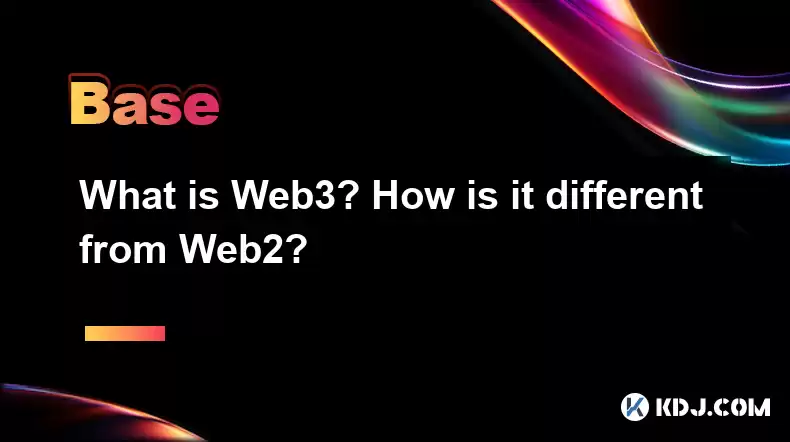
- Web3 represents a decentralized internet vision, contrasting with Web2's centralized architecture.
- Decentralized applications (dApps) and blockchain technology are core to Web3.
- Data ownership and control shift to users in Web3, unlike Web2's centralized data storage.
- Cryptocurrencies and tokens fuel Web3's economic model, enabling various transactions and incentives.
- Security and scalability remain significant challenges for Web3's widespread adoption.
The internet has evolved through distinct phases. Web1, characterized by static websites, gave way to Web2, the interactive and social internet we know today. Now, we're witnessing the emergence of Web3, a paradigm shift promising a more decentralized and user-centric online experience. At its core, Web3 leverages blockchain technology and cryptocurrencies to create a more transparent, secure, and democratic internet.
Web3's defining characteristic is its decentralization. Unlike Web2, dominated by large corporations controlling data and platforms, Web3 aims to distribute power among users. This is achieved through blockchain technology, a distributed ledger recording transactions across multiple computers, making it highly resistant to censorship and single points of failure.
The concept of dApps (decentralized applications) is central to Web3. These applications run on blockchain networks, eliminating the need for centralized servers and intermediaries. This decentralization empowers users with greater control over their data and digital identities. Think of it as shifting from renting your digital life on a platform to owning it.
Web2 platforms, such as Facebook or Google, collect and utilize user data for advertising and other purposes. This data is often stored in centralized databases, vulnerable to breaches and misuse. In contrast, Web3 emphasizes user data ownership. Users control their data, deciding who can access it and how it's used. This enhanced privacy is a significant appeal of the Web3 vision.
Cryptocurrencies and tokens form the economic backbone of Web3. These digital assets facilitate transactions within dApps, enabling users to buy, sell, and trade digital goods and services. Tokens can also serve as governance mechanisms, allowing users to participate in the decision-making processes of the platforms they use. This participatory element contrasts sharply with the top-down structure of many Web2 platforms.
The shift from Web2 to Web3 is not a simple replacement but a gradual evolution. Web3 technologies are still developing, and significant challenges remain. Scalability, the ability to handle a large number of transactions efficiently, is a key concern. Current blockchain technologies often struggle with processing speed and transaction costs.
Security is another crucial aspect. While blockchain technology offers inherent security features, smart contracts (self-executing contracts on blockchain) can contain vulnerabilities, potentially leading to financial losses. The decentralized nature of Web3 also presents challenges in resolving disputes and enforcing regulations. This lack of centralized governance can lead to complexities in managing conflicts and ensuring accountability.
The user experience in Web3 is often more technically demanding than in Web2. Understanding crypto wallets, interacting with dApps, and navigating the complexities of blockchain technology can be challenging for less technically proficient users. This barrier to entry hinders wider adoption.
Web3's potential extends beyond the technical aspects. It promises to revolutionize various industries, including finance (DeFi), gaming (play-to-earn), digital identity, and content creation. By empowering users with greater control and ownership, Web3 aims to create a more equitable and democratic internet. However, its success depends on overcoming the technological and societal hurdles it faces.
Common Questions and Answers:Q: Is Web3 truly decentralized?A: While Web3 aims for decentralization, complete decentralization is a complex goal. Many Web3 projects rely on specific infrastructure providers or have governance structures that aren't fully distributed. The level of decentralization varies across different platforms and projects.
Q: How secure is Web3?A: Blockchain's inherent security features enhance security, but vulnerabilities can exist in smart contracts and other aspects of Web3 applications. User education and responsible development practices are crucial to mitigating risks. The decentralized nature also makes it difficult to apply traditional security measures.
Q: What are the benefits of using Web3 applications?A: Web3 offers benefits such as increased user control over data, enhanced privacy, censorship resistance, and transparent transactions. The potential for new economic models and decentralized governance also presents significant advantages.
Q: How can I get involved in Web3?A: Start by learning about blockchain technology and cryptocurrencies. Explore different Web3 applications and platforms, experimenting with decentralized finance (DeFi) applications or participating in decentralized autonomous organizations (DAOs).
Q: What are the risks associated with Web3?A: Risks include the volatility of cryptocurrencies, the potential for scams and fraudulent projects, security vulnerabilities in smart contracts, and regulatory uncertainty. Thorough research and due diligence are crucial before engaging with Web3 projects.
Q: What is the future of Web3?A: The future of Web3 is uncertain. Its success hinges on overcoming scalability and security challenges, improving user experience, and establishing clear regulatory frameworks. Wide adoption will depend on the development of user-friendly interfaces and solutions to address current limitations.
Disclaimer:info@kdj.com
The information provided is not trading advice. kdj.com does not assume any responsibility for any investments made based on the information provided in this article. Cryptocurrencies are highly volatile and it is highly recommended that you invest with caution after thorough research!
If you believe that the content used on this website infringes your copyright, please contact us immediately (info@kdj.com) and we will delete it promptly.
- Crypto News, October 2025: Missed Stories You Need to Know
- 2025-10-18 08:45:14
- PAX Gold (PAXG): Riding the Crypto Gold Rush in the Digital Age
- 2025-10-18 08:25:14
- Dogecoin, PEPE, and Remittix: Navigating the Crypto Landscape in Late 2025
- 2025-10-18 09:10:15
- Quant Eyes Rebound: Can $75 Support Level Hold?
- 2025-10-18 08:45:14
- Bitcoin's Wild Ride: Crypto Crash Wipes Out $600 Billion!
- 2025-10-18 08:25:14
- Crypto Market Check: Renewed Buying for ETH, ADA, SUI Amidst Market Jitters
- 2025-10-18 08:50:12
Related knowledge
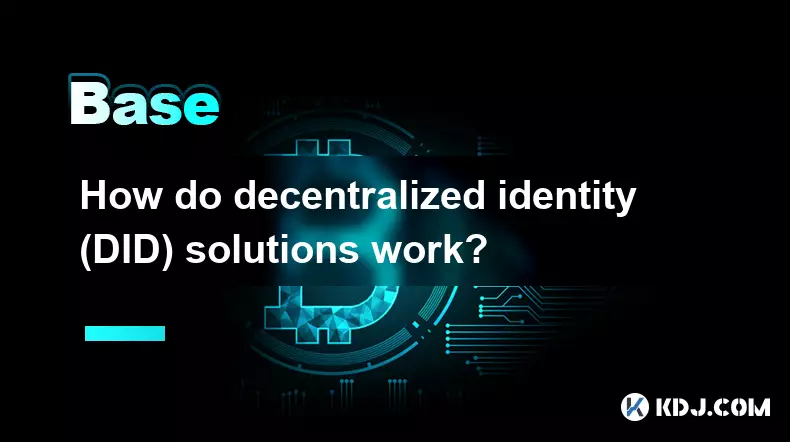
How do decentralized identity (DID) solutions work?
Oct 14,2025 at 11:36pm
Understanding Decentralized Identity in the Blockchain Ecosystem1. Decentralized identity (DID) solutions are built on blockchain networks, allowing i...
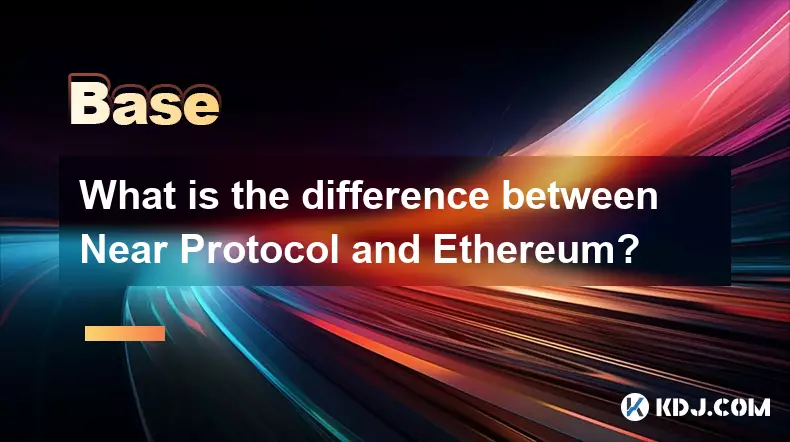
What is the difference between Near Protocol and Ethereum?
Oct 15,2025 at 08:01am
Near Protocol and Ethereum: Core Architectural Differences1. Near Protocol operates on a sharded blockchain architecture known as Nightshade, which al...
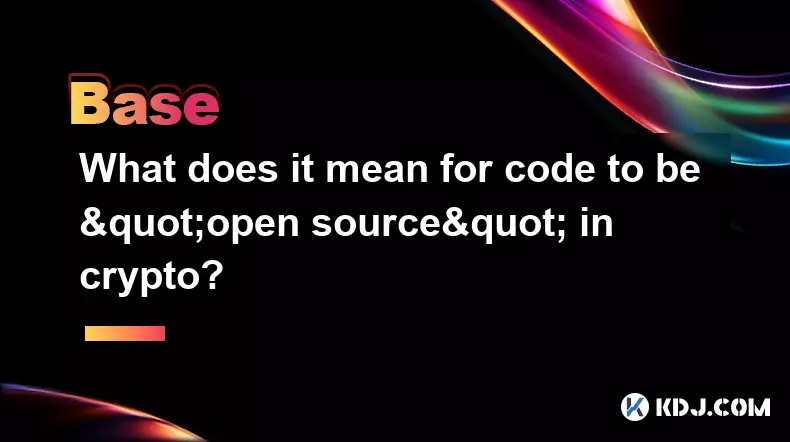
What does it mean for code to be "open source" in crypto?
Oct 12,2025 at 01:54pm
Understanding Open Source in the Cryptocurrency Ecosystem1. In the context of cryptocurrency, open source refers to software whose code is publicly ac...
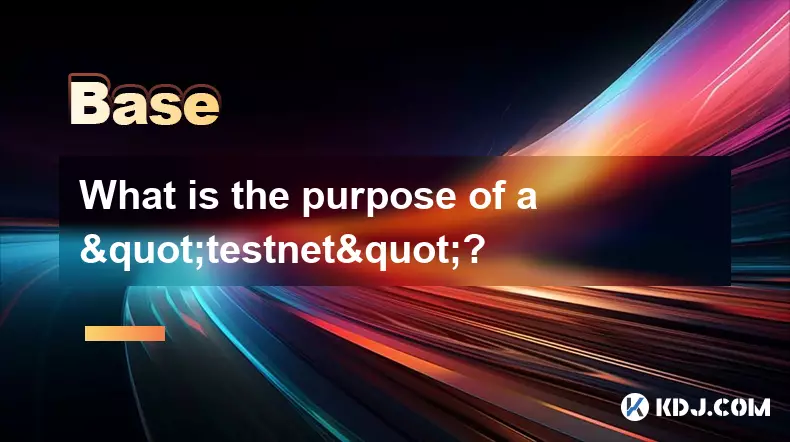
What is the purpose of a "testnet"?
Oct 12,2025 at 09:01am
Understanding the Role of Testnets in Blockchain Development1. A testnet serves as a parallel version of a blockchain network, designed specifically f...

How to avoid phishing scams in crypto?
Oct 13,2025 at 06:18pm
Understanding Common Crypto Phishing Tactics1. Cybercriminals frequently use fake websites that mirror legitimate crypto exchanges or wallet platforms...
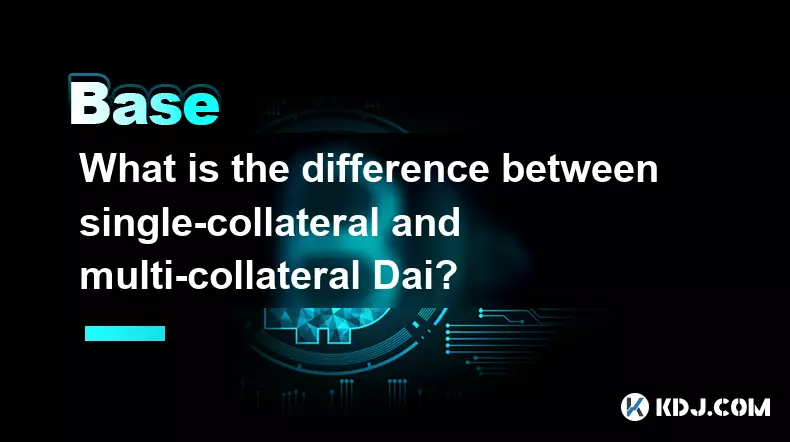
What is the difference between single-collateral and multi-collateral Dai?
Oct 12,2025 at 05:18pm
Understanding Single-Collateral Dai1. Single-Collateral Dai (SCD) was the original version of the Dai stablecoin launched by MakerDAO in 2017. It allo...

How do decentralized identity (DID) solutions work?
Oct 14,2025 at 11:36pm
Understanding Decentralized Identity in the Blockchain Ecosystem1. Decentralized identity (DID) solutions are built on blockchain networks, allowing i...

What is the difference between Near Protocol and Ethereum?
Oct 15,2025 at 08:01am
Near Protocol and Ethereum: Core Architectural Differences1. Near Protocol operates on a sharded blockchain architecture known as Nightshade, which al...

What does it mean for code to be "open source" in crypto?
Oct 12,2025 at 01:54pm
Understanding Open Source in the Cryptocurrency Ecosystem1. In the context of cryptocurrency, open source refers to software whose code is publicly ac...

What is the purpose of a "testnet"?
Oct 12,2025 at 09:01am
Understanding the Role of Testnets in Blockchain Development1. A testnet serves as a parallel version of a blockchain network, designed specifically f...

How to avoid phishing scams in crypto?
Oct 13,2025 at 06:18pm
Understanding Common Crypto Phishing Tactics1. Cybercriminals frequently use fake websites that mirror legitimate crypto exchanges or wallet platforms...

What is the difference between single-collateral and multi-collateral Dai?
Oct 12,2025 at 05:18pm
Understanding Single-Collateral Dai1. Single-Collateral Dai (SCD) was the original version of the Dai stablecoin launched by MakerDAO in 2017. It allo...
See all articles
















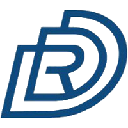






![[4K 60fps] 5upreme by RoyalP (1 coin) [4K 60fps] 5upreme by RoyalP (1 coin)](/uploads/2025/10/18/cryptocurrencies-news/videos/k-fps-upreme-royalp-coin/68f2e6c9ef491_image_500_375.webp)


















































